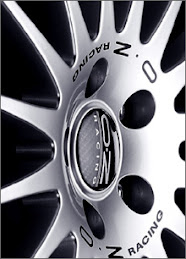
470 hp/tonne Race Ready Sport Exige Debuts
Lotus Sport, the performance division of Lotus Cars Ltd., has developed the new Lotus Sport Exige, a direct motorsport derivative of the successful Lotus Exige.
The Lotus designed and engineered racecar was part manufactured by RTN, the team responsible for the Le Mans winning Bentley, using the latest motorsport techniques and procedures to produce a lightweight yet strong carbon-fibre bodywork structure around the standard road-going Lotus Exige Aluminium extruded and bonded chassis. The Lotus Sport designed fully adjustable suspension system with double wishbones all round was fabricated and manufactured by Pilbeam. Power is provided by a 400 bhp Swindon Racing Engines tuned GM 3 litre V6 racing engine linked to a Hewland sequential six-speed gearbox, with AP-Racing providing the braking system.
This one-off racecar has been built for a South East Asian client and is expected to race in selected sportscar races in Asia. There are no plans as yet to build further examples of the Lotus Sport Exige but the base structure has been carefully designed to comply with key motorsport regulations around the world. Adhering to the key Lotus philosophy of performance through lightweight, the Lotus Sport Exige weighs in at just 1873 lb. The whole project, conducted in complete secrecy has taken less than 6 months and the car will run for the first time at the 21 mile Hethel test track in mid January.
Chris Arnold, General Manager for Lotus Sport explains the philosophy behind the Lotus Sport Exige: “The Lotus Sport Exige is a competition car developed directly from the road going Exige. The racecar uses the existing tub with only minor modifications, and careful design has enabled Lotus Sport to package an upgraded powertrain assembly whilst maintaining an equivalent weight to the existing road car. When this package is combined with further improvements to suspension and bodywork, it produces a fantastic looking car with great track potential. The car has been taken from concept to reality in only six months and I thank all our engineering partners and the staff at Lotus who have worked so hard on this fantastic project.” As the Lotus Sport Exige is, at present, a one-off racecar, a price cannot be given for the racecar package.
The Body
Lightweight “Z-Preg.” carbon fibre bodywork was specially manufactured for Lotus by RTN, the team responsible for the Le Mans winning Bentley. These panels (front clam, “A” panel, body side and sill, roof, engine cover and rear clam) have been made using an innovative low temperature curing process. The moulds were taken directly from the Sport Exige styling “clay” and the resulting carbon fibre panels are race-ready without having to rely on the costly tooling process used in current carbon fibre technology. This is thought to be the first time that this technology has been used on such large carbon fibre panels.
An aerodynamically developed front splitter, carbon fibre rear diffuser and an adjustable carbon rear wing provide increased levels of downforce. The interior of the Lotus Sport Exige is similar to the standard Exige, but the standard roadcar wiring harness is replaced with a full Raychem 25 system incorporating Mil-spec connectors from Beru Formula 1 Harnesses. Conventional fuses are replaced with circuit breakers, and a Stack display with integrated data recording is fitted as standard.
A racing bucket seat (driver side only) is mounted as right hand drive to optimise weight balance through right hand corners (most circuits run clockwise). A six-point seat belt, prepared for using HANS Safety System, and a removable steering wheel (with quick-connect coupling) is included in the interior package.
Rims and Tires
Ultra lightweight OZ Racing Chrono single-piece cast magnesium rims (8.8J x 17 ET40 at the front and 11.25J x 18 ET50 at the rear) are shod with Yokohama tires (250/610-17 at the front and 280/650-18 at the rear).
Powertrain: Engine and Transmission
A narrow angle V6, 2,998 cc Swindon Racing Engines tuned GM racing engine is mounted longitudinally in the Lotus Sport Exige. The naturally aspirated 24-valve engine produces 400 bhp at 7,750 rpm and 294 lb-ft of torque at 6,500 rpm and has a maximum engine speed of 8,250 rpm. When the light weight of the Lotus Sport Exige is taken into consideration, the power to weight ratio is a phenomenal 470 bhp / tonne.
Breathing is via an F1-style airbox and air snorkel from the roof panel of the Sport Exige directly into the six carbon fibre air trumpets.
The dry-sump engine, with a bore of 86 mm and stroke of 86 mm is water cooled and also uses an oil-water heat exchanger to efficiently cool the oil. The whole engine is controlled by a Motec M600 electronic engine management system fitted inside the cockpit.
The power is transferred from the engine to the rear wheels via a single mass stepped flywheel, AP Racing twin-disc cerametallic race clutch and Hewland NLT sequential six-speed dog type transmission (with in-line shift mechanism). The gearbox itself is cooled through an oil-water heat exchanger. A limited slip differential (separate power and brake ramp angles) completes the powertrain package.

























